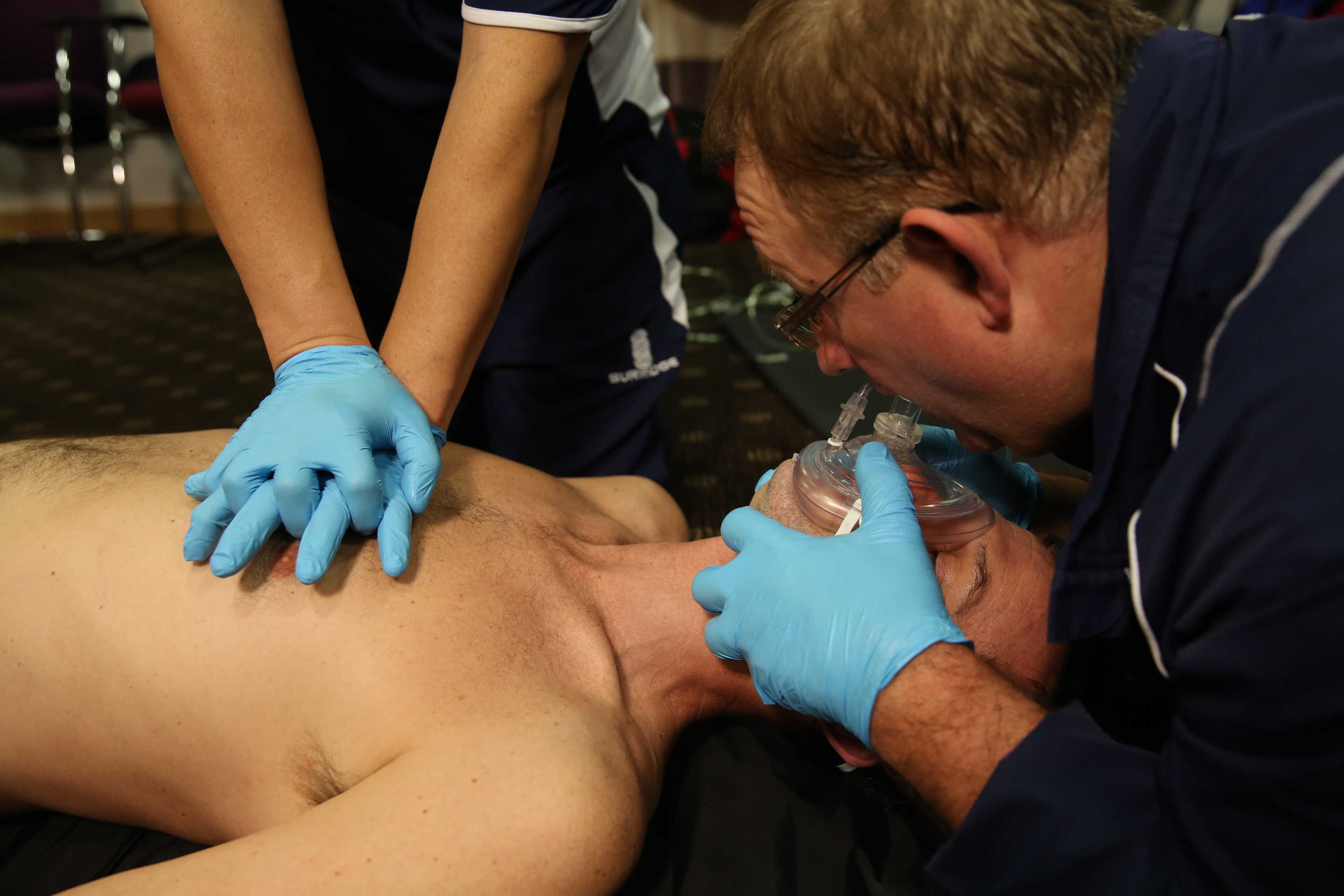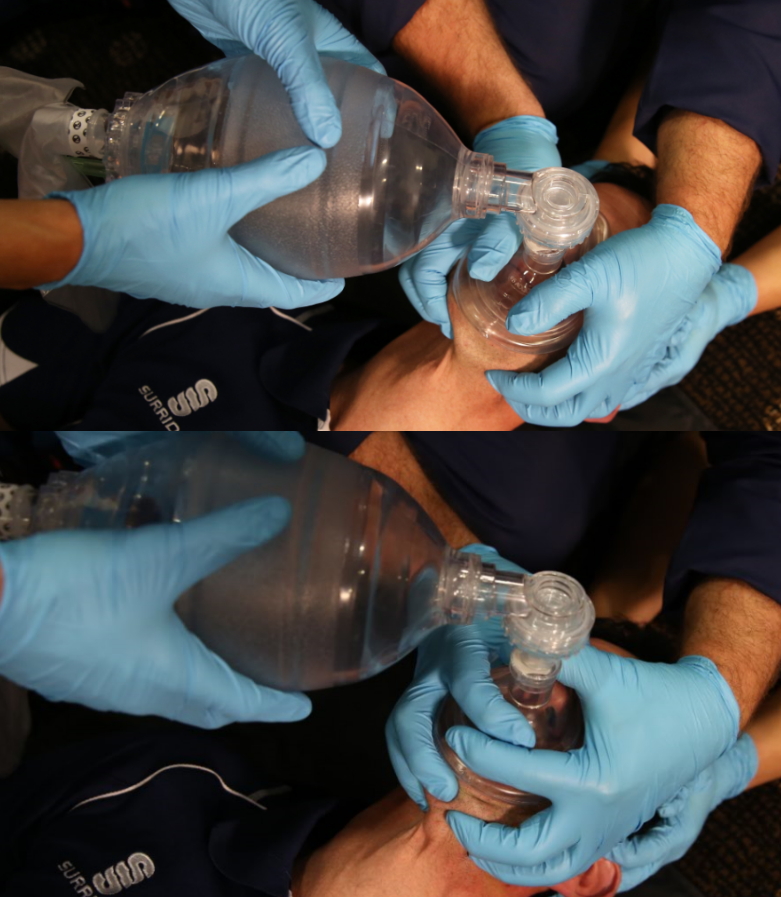Ventilation Techniques
If a player is not breathing adequately, then ventilation must be supported. The most common devices in use in immediate care are the pocket face mask and the bag-valve-mask device. The pocket face mask allows the rescuer to blow exhaled air into the player’s lungs using a mouth to mask technique.
Key to this technique is the ability to create a good seal between the mask and the players face. This can be done by holding the thumb and forefingers in a “C-shape” down either side of the mask and hooking the middle and ring fingers under the angles of the mandible. A different but equally effective technique is for the rescuer to place their thenar eminence and radial border of the thumbs along either side of the mask, and lift the mandible forward as described above. These techniques lift the players face up into the mask, while pushing the mask down to seal on the players face. The rescuer then blows into the mouthpiece of the mask, so that the player receives exhaled air.
This will supply the player with approximately 16% oxygen. The pocket face mask has a port for oxygen supplementation if oxygen is available.

Pocket mask ventilation with supplementary oxygen
The bag-valve-mask device has a mask which is very similar to the pocket face mask (most pocket face masks are compatible with the BVM device). This should be applied to the players face as described above. Unless the rescuer does this on a frequent basis, it should be done with two hands to create an optimal seal, and a second rescuer should squeeze the bag.
These devices have the advantage of avoiding direct person to person contact, as required with mouth to mouth, and therefore reduce the risk of cross infection, and make it a more acceptable procedure for the rescuer.
Common errors with the use of BVMs are; forgetting to connect to oxygen, or squeezing the bag too fast and too hard. Ideally a ventilation should be delivered every 5-6 seconds.
Using one of these devices is likely to cause gastric inflation and if continued for any length of time, there is a significant risk of the patient passively refluxing, or vomiting, and aspirating.

Bag valve-mask ventilation